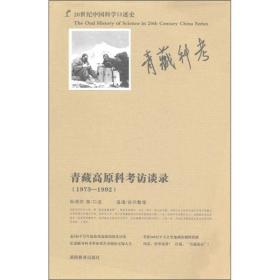
新东方 AP宏观经济学5分制胜(第2版)
¥ 17.11 3.8折 ¥ 45 九品
仅1件
北京昌平
认证卖家担保交易快速发货售后保障
作者[美]Eric R.Dodge 著
出版社西安交通大学出版社
出版时间2016-12
版次1
装帧平装
货号A2
上书时间2024-12-17
- 最新上架
商品详情
- 品相描述:九品
图书标准信息
- 作者 [美]Eric R.Dodge 著
- 出版社 西安交通大学出版社
- 出版时间 2016-12
- 版次 1
- ISBN 9787560564036
- 定价 45.00元
- 装帧 平装
- 开本 16开
- 纸张 胶版纸
- 页数 240页
- 字数 330千字
- 【内容简介】
-
《AP宏观经济学5分制胜》共分5步,帮助考生了解AP考试以及自身水平,培养考试技巧,复习重点难点,建立应考信心。
全书详细介绍了AP考试特点,并提供了三种不同的备考方案,方便考生根据自身情况制定复习计划。诊断测试附有详细答案和解析,方便考生查缺补漏。此外,还为各种类型的考题提供了应试技巧,让考生备考事半功倍。考点复习部分共有八章,涵盖所有AP宏观经济学考点,每章包括宏观经济学概念释义以及详细例题解析,考生复习可做到有的放矢。书后和CD-ROM上各附带两套试题,方便考生考前练习。
- 【作者简介】
-
Eric Dodge,资深AP教学与考试专家,拥有多年AP经济学教学经验,曾出版多本AP宏观经济学教材,熟知AP考试特点,现任印第安纳州Hanover College经济学教授。
- 【目录】
-
STEP 1 Set Up Your Study Program
1 What You Need to Know About the AP Macroeconomics Exam 3
2 How to Plan Your Time 12
STEP 2 Determine Your Test Readiness
3 Take the Diagnostic Exam 19
Diagnostic Exam: AP Macroeconomics 23
STEP 3 Develop Strategies for Success
4 How to Approach Each Question Type 33
Section I: Multiple-Choice Questions 33
Section II: Free-Response Questions 36
STEP 4 Review the Knowledge You Need to Score High
5 Fundamentals of Economic Analysis 41
5.1 Scarce Resources 42
5.2 Production Possibilities 45
5.3 Functions of Economic Systems 51
6 Demand, Supply, Market Equilibrium, and Welfare Analysis 55
6.1 Demand 55
6.2 Supply 61
6.3 Market Equilibrium 64
6.4 Welfare Analysis 69
7 Macroeconomic Measures of Performance 74
7.1 The Circular Flow Model 75
7.2 Accounting for Output and Income 76
7.3 Inflation and the Consumer Price Index 82
7.4 Unemployment 86
8 Consumption, Saving, Investment, and the Multiplier 92
8.1 Consumption and Saving 93
8.2 Investment 96
8.3 The Multiplier Effect 99
9 Aggregate Demand and Aggregate Supply 106
9.1 Aggregate Demand (AD) 106
9.2 Aggregate Supply (AS) 109
9.3 Macroeconomic Equilibrium 112
9.4 The Trade-Off Between Inflation and Unemployment 117
10 Fiscal Policy, Economic Growth, and Productivity 124
10.1 Expansionary and Contractionary Fiscal Policy 124
10.2 Difficulties of Fiscal Policy 128
10.3 Economic Growth and Productivity 132
11 Money, Banking, and Monetary Policy 139
11.1 Money and Financial Assets 139
11.2 Fractional Reserve Banking and Money Creation 146
11.3 Monetary Policy 148
12 International Trade 157
12.1 Comparative Advantage and Gains from Trade 157
12.2 Balance of Payments 161
12.3 Foreign Exchange Rates 163
12.4 Trade Barriers 166
STEP 5 Build Your Test-Taking Confidence
AP Macroeconomics Practice Exam 1 173
AP Macroeconomics Practice Exam 2 195
Appendixes
Further Reading 217
Websites 219
Glossary 221
Important Formulas and Conditions 227
点击展开
点击收起
— 没有更多了 —












以下为对购买帮助不大的评价